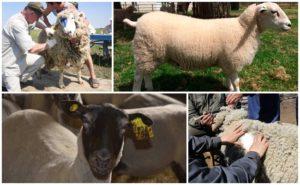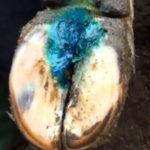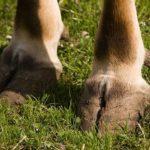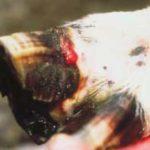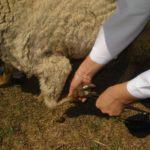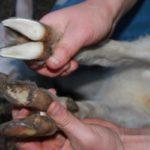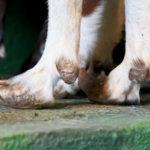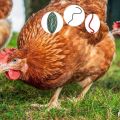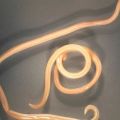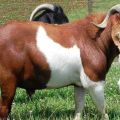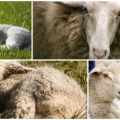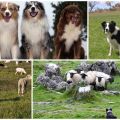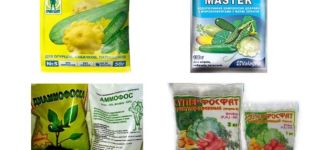Symptoms and treatment of sheep hoof rot at home, prevention
The development of hoof rot in sheep occurs due to infection of the animal with a gram-negative bacterium. The disease is contagious and leads to serious complications. The course of the pathology is accompanied by rotting and destruction of the tissues that make up the hooves. In the absence of adequate treatment, the disease leads to the death of the infected animal. Moreover, after the end of therapy, sheep do not develop immunity to this bacterium.
History of the disease. Economic damage
The first cases of hoof rot infection of domestic animals were registered more than 300 years ago. Initially, this pathology was not isolated into a separate group, since the reasons for the development of the disease were not established. Some researchers have suggested that hoof rot is a symptom of necrobacteriosis. Officially, this pathology was isolated as a separate disease in 1938 by a British scientist. This happened due to the fact that the researcher identified the causative agent of hoof rot.
The disease is considered highly contagious. In the Soviet Union, during the 50-70s of the last century, mass infection of livestock with hoof rot was recorded several times. More often, cases of infection were detected in the southern regions of the country.
The disease brings with it significant economic damage, since:
- reduces the amount of meat and wool obtained from sheep;
- makes the offspring weak;
- disrupts the normal reproduction of livestock;
- weakens the immunity of young animals to other pathologies.
In case of infection of the livestock, the volume of meat produced decreases by 20-40% in comparison with the early indicators, milk - by 20-60%, wool - by 10-40%.
Causes of the disease
The disease develops after infection with the anaerobic bacterium Bacteroides nodosus. Infection occurs mainly during open grazing. The pathogen remains viable in the grass for two weeks, in the hooves for one year. Therefore, infection of animals is possible in the pen.

The following factors are capable of provoking the development of the disease in the herd:
- high humidity;
- unsanitary conditions of detention;
- insufficient space in the pen, because of which the animals are constantly in contact with each other;
- lack of a hard surface in the walking area;
- rare litter change;
- hoof damage;
- weakening of the immune defense.
Infection occurs more often in autumn and spring, when the amount of precipitation increases.Therefore, in order to avoid infection, it is recommended to treat the hooves with bleach, phenol or formalin after grazing, which destroy the pathogen.
Symptoms of the disease
The symptoms of the disease, depending on the nature of the associated factors, appear 5-20 days after infection. Pathology at the initial stage is acute, but over time it becomes chronic. This means that hoof rot symptoms may reappear months after the animal has recovered.
This pathology at the initial stage of development causes:
- redness of tissues at the site of infection;
- swelling;
- hair loss;
- the formation of mucus in the interdigital fissure;
- detachment of the horny shoe;
- the appearance of a fetid odor from the affected hoof;
- discharge of purulent masses.
The infected animal becomes restless and stops stepping on the affected leg. In some cases, the horn boot falls off. Most often, these symptoms appear on one or two legs, less often on four.
Hoof rot develops in three stages: mild, moderate and severe. Often, the disease is cured at the first or second stage. If the pathology can be cured, then the affected tissue is restored. However, after this, deformation of the hooves is noted. Among the characteristic features of this pathology is that the body temperature of the animal does not rise, while the affected area remains hot.

Establishing diagnosis
The initial diagnosis is based on an external examination of the animal and collection of information about the symptoms. To confirm the preliminary conclusion, material is taken from the affected area and bacteriological examination of scraping is carried out. The final diagnosis is made on condition that pathogenic microflora is detected in the samples taken.
Hoof rot treatment methods
The above recommendation for the treatment of hooves with formalin and other substances concerns primarily the prevention of infection. But the same solutions are applicable to the treatment of pathology.
As part of the hoof rot therapy, the affected area is treated with 10% formalin or 5% paraform. At the same time, the affected areas are removed with a scalpel and other instruments. After each such procedure, baths with a 10% formalin solution are recommended. It is recommended to cut off the affected tissue with subsequent processing every 2 days until the symptoms disappear completely.
In order to prevent the spread of the disease and the addition of a secondary infection, these drugs must be combined with broad-spectrum antibiotics: "Bicillin-5", "Biomycin" or "Nitox 200". It is not recommended to carry out these manipulations at home. This is due to the fact that for a complete cure of the animal, it is necessary to completely remove the affected tissue.
Potential danger
In the absence of adequate and timely treatment, hoof rot leads to the following complications:
- tissue necrosis of the affected limb;
- the formation of fistulas in different parts of the body, including the oral cavity and udder;
- endometriosis;
- exhaustion of the animal.
In advanced cases, rotting of the hoof provokes extensive sepsis, due to which the animal dies.

Prevention and immunity
In order to prevent infection of sheep with hoof rot, it is recommended:
- regularly remove manure and change the bedding in the pen;
- keep animals in well-ventilated areas;
- do not allow an increase in humidity in the pen;
- provide adequate nutrition for sheep;
- clean the hooves every 2 months;
- every six months, treat the hooves with 10 percent formalin solution or 20 percent copper sulfate.
As noted, after healing, the animal's body does not develop strong immunity to the pathogen. Therefore, re-infection is possible. The artificial vaccine, which veterinarians use periodically, has a good effect for a limited period of time.
